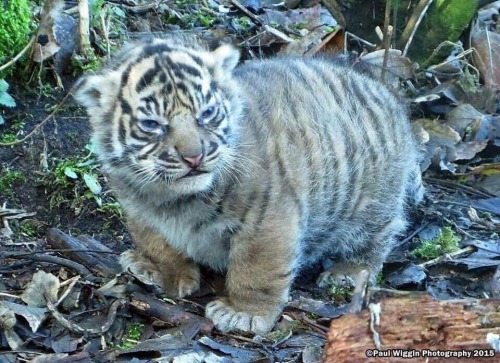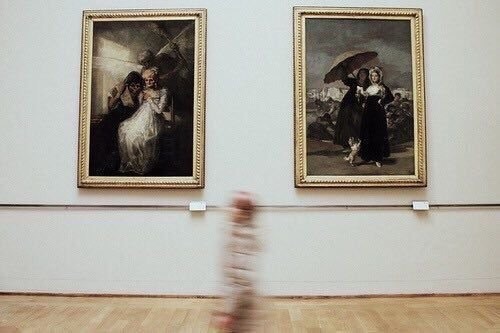Seriously Fuck Adobe

Seriously fuck Adobe

And remember

More Posts from Writingwickedwitch and Others
Princess Tutu and Grand Narrative

Once upon a time, there was a clumsy school girl granted the power to transform into the magical ballerina Princess Tutu.
“Once upon a time” is a familiar phrase used to connect stories that take place in lands distant and times different from one another into the same fairytale world. Each episode of the anime Princess Tutu begins with this familiar phrase and then proceeds to tell a story both known and new, where Hans Christian Anderson’s Ugly Ducking becomes Odette, the Swan Queen, from Swan Lake, thanks to the magic of the mysterious Drosselmeyer, who bares a striking resemblance to the character of the same name from The Nutcracker. Princess Tutu is not just a retelling of a handful of fairy tales, it’s an adaptation of stories across literature, ballet, opera, and of course, anime. Each piece of Princess Tutu’s narrative belongs to worlds larger than its own. The series challenges paradigms about typical narrative creation by weaving together multiple “grand narratives”.
While working as an editor for Kadokawa Shoten in the late 80s, Otsuka Eiji wrote a paper called “World and Variation: The Reproduction and Consumption of Narrative” in which he explains the idea of the grand narrative. An individual story only gives the audience a small glimpse into that wider world that the story is set in. This wider world is full of countless narratives told from countless perspectives that make up the grand narrative. Eiji uses the Gundam franchise to illustrate this concept where any given episode of the anime is a small snapshot of narrative within the larger universe(s) Gundam takes place in. Eiji explains, “Countless other [stories] could exist if someone else were the main character.”
Everyone is the main character of their own story. But most of these stories that make up the grand narrative of a world are hidden from view. It’s impossible to tell every story at once and have it be comprehensible. Instead we can only consume small bite-sized narratives that give us a snapshot of the (hopefully) interesting parts of a protagonist’s life. But who, exactly, is controlling these smaller narratives? This is a question faced by the characters of Princess Tutu.
The concept of shifting protagonists and expanding the audience’s view into the grand narrative heavily ties into Princess Tutu’s premise. The anime’s story is catalyzed by Drosselmeyer, the author of a fictitious book called The Prince and The Raven. The book’s ending is a stalemate between the titular characters so Drosselmeyer decides to promote the minor character of Princess Tutu to the role of main character to help the story move forward.
As you can probably tell by the name, Princess Tutu is heavily influenced by ballet. One of the show’s more significant influences is Swan Lake. Through the anime’s re-purposing of Swan Lake’s Odette as a magical girl, Princess Tutu continues to uphold ballet’s tradition of adapting the story for its own purposes.

Princess Tutu and Odette
The basic story of Swan Lake is about a prince falling in love with a girl cursed to be a swan from sunrise to sunset by an evil sorcerer. The sorcerer tricks the prince into confessing his love for his daughter, Odile, instead of the swan girl thus dooming the swan girl’s chance at true love and breaking the curse.
Amanda Kennell, an American scholar, outlines in her paper “Origin and Ownership from Ballet to Anime” Swan Lake’s production history and the evolution of the ballet’s narrative. The original staging in 1877 had the story end with the villain going unpunished and the two lovers drowning in a flood. In a revival staging from 1895 the villain was defeated and the two lovers reunited in heaven after throwing themselves into a lake. In a single scene production called The Magic Swan from the 1940s, the iconic “black swan” was introduced setting the precedent for the same ballerina to play the role of Odette and Odile in striking white and black costumes. And finally, another staging in 2006, not only adopted the White and Black Swan motif, but also changed the ending once again so that the prince kills the villain and he and Odette live happily ever after.
Despite each staging of the classic having significant differences, none of the variations are cast away as counterfeits. The value of the production isn’t in how close it is to the original Swan Lake but instead in the relative merit of each variation. In fact, it doesn’t really matter which you consider “the original” where the additions made by each carry their own merit and add to Swan Lake’s grand narrative. In this same regard, it would be acceptable to consider Princess Tutu another variation on the world of Swan Lake’s grand narrative.
There is terminology for this phenomenon in Kabuki theater. Eiji points out in his paper the similarities between the concepts of Sekai (world) and Shukou (plot) from Kabuki theater and his ideas of the grand narrative and the smaller narratives.
In Kabuki, Sekai represents the world a story takes place in and Shukou represents the story that is a product of that world. Each staging of a Kabuki play is its own Shukou derived from either a single Sekai or the mixing of Sekai. What matters in creating a good performance is not necessarily conveying the Sekai but instead the relative merit of the Shukou’s take on things. No performance is exactly the same and different actors bring different strengths to a performance and in turn provide a different experience for the audience’s entertainment. This of course carries over to more art forms than just Kabuki, classic ballet is in a similar position where entire songs are sometimes re-choreographed just to match the strengths of an individual ballerina. Ballet in particular has a long tradition of making minor and major changes to suit an individual performance. Whether it be tweaking choreography or straight up giving the story a different ending. The evolution of Swan Lake’s production is an excellent example of how productions of what are considered to be the same story can dramatically vary.
But Princess Tutu borrows from more stories than just Swan Lake. This brings us back to Kabuki and the idea of mixing Sekai in order to create another Shukou.
Princess Tutu takes pieces of classic stories and rearranges them to create something simultaneously familiar and completely new. Princess Tutu is not forging a new Shukou from only Swan Lake’s Sekai, but instead is connecting the canon of European literature and performing arts together into an even more extensive grand narrative.
Just look at the series’ opening for example, where Swan Lake and The Nutcracker are intertwined with one another as the anime’s titular character is dressed in the ballet costume of Odette and dances to The Nutcracker’s Flower Waltz to simultaneously combine the worlds of two ballets while producing an entirely new moment unique to the Princess Tutu anime.
The anime ends on the implication that if one person tries to control a story and the grand narrative it’s connected to, that person will fail. Princess Tutu is an excellent reminder of how stories are dynamic. Stories end up taking on a life of their own evolving, expanding and being reworked by both creators and consumers.
Eiji explains that once the consumers feel they have a grasp on the grand narrative they are free to produce their own small narratives from it. This is exactly how its creators forged Princess Tutu from the grand narrative of classic literature and performing arts. Just as mangaka can’t help it if a doujinshi adds to the narrative of their original story, Travosky can’t control the new life his ballets have taken on in Princess Tutu. Stories will take on a life of their own, abandon the need for an original and become a part to a larger grand narrative to be consumed and reworked over and over.
Victorian Slang for Steampunk Characters
Whether your character is a thief, sailor, noble, engineer, or average citizen in the 19th century, dialogue can be the quickest (and the funnest!) way to paint their personality and circumstances.
Here is short list of resources I’ve found to be the most helpful, plus a compilation of 108 Victorian slang terms that happen to be my favorites.
Victorian Slang Resources
Passing English of the Victorian era: a Dictionary of Heterodox English, Slang and Phrase (1909) is a book of slang from all levels of society, categorized by origin and dates of use.
Vocabulum, or the Rogue’s Lexicon (1859) is a book of slang published in the Victorian era itself, specializing in the slang of criminals and miscreants of all sorts.
An online list of 19th century American and Civil War era vocabulary, particularly helpful for military slang and for characters with an American background.
And a list of equally delightful slang from the Edwardian era, technically not Victorian but with reasonable room for overlap—and besides, who’s going to do as much research as you?
Now for my favorite slang terms, most of them compiled from Passing English. You’ll find some bias toward a roguish vocabulary, since my steampunk novella Aliferous is centered around air pirates!
108 Victorian Slang Terms
Above-board – Frank, open. From sailors’ lingo. Not between decks or in the hold, but above all the boards in the ship.
Ah, dear me! – ejaculation of sorrow
Alexandra Limp (approx. 1872) – An affected manner of walking seen for several years amongst women. Said to have been imitated from the temporary mode in which the then Princess of Wales walked after some trouble with a knee. (See Buxton Limp, Grecian Bend, Roman Fall.)
All his buttons on (approx. 1880 on) – Sharp, alive, active, not to be deceived. He is eighty-three years of age, but as we say hereabouts, has all his buttons on.
All a treat – Perfection of enjoyment, sometimes used satirically to depict mild catastrophe.
All over red (approx. 1840 on) – Dangerous, to be avoided.
Anti-Tox (approx. 1885) – A drug to sober a drunken person. Tox is, of course, the abbreviation of intoxication.
Balloon-juice (1883) – Soda-water; presumably suggested by its gassy nature. It’s as good as a bottle of balloon-juice after a night’s hard boozing.
Keep reading
So apparently last year the National Park Service in the US dropped an over 1200 page study of LGBTQ American History as part of their Who We Are program which includes studies on African-American history, Latino history, and Indigenous history.
Like. This is awesome. But also it feels very surreal that maybe one of the most comprehensive examinations of LGBTQ history in America (it covers sports! art! race! historical sites! health! cities!) was just casually done by the parks service.
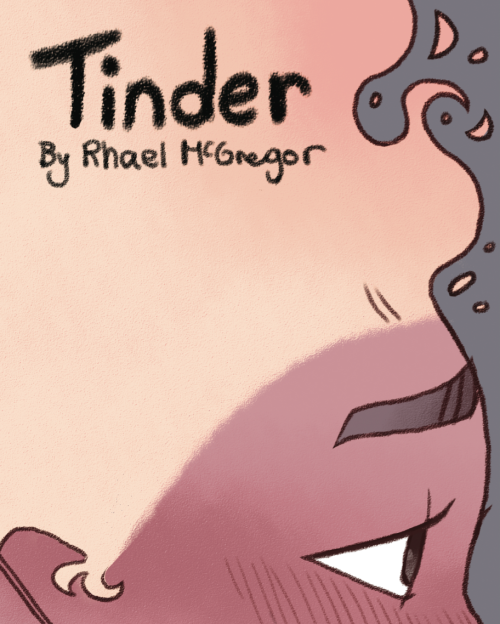
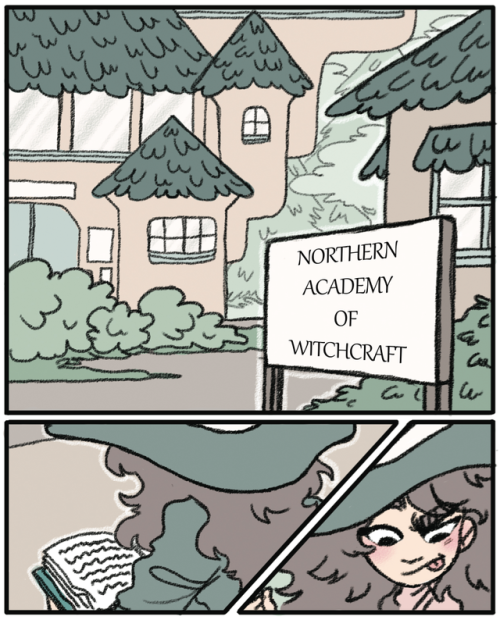
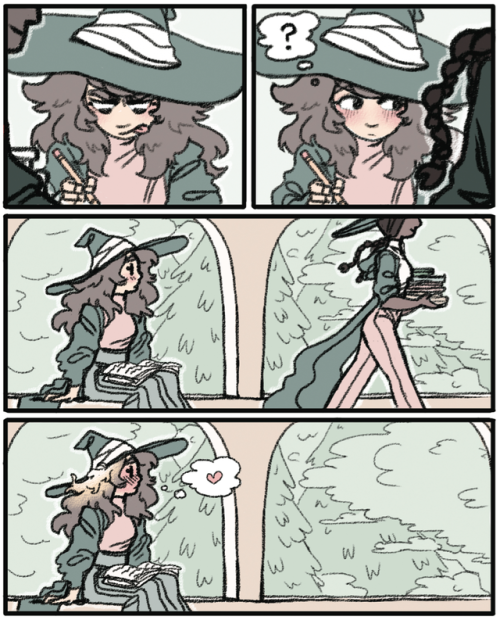
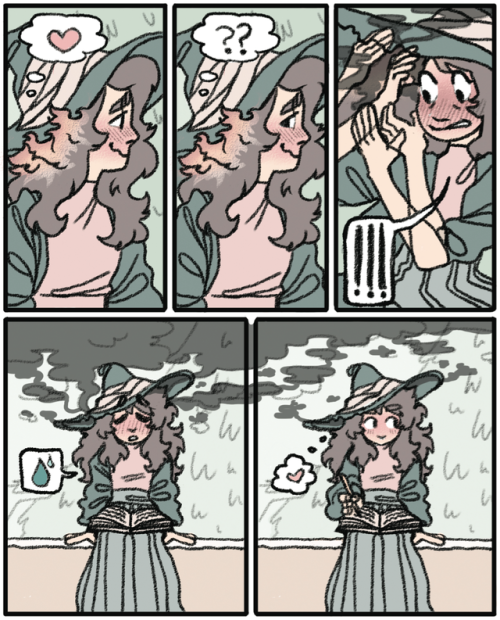
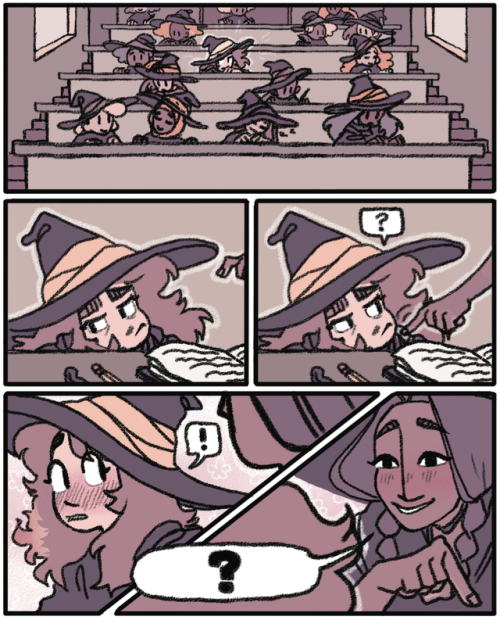
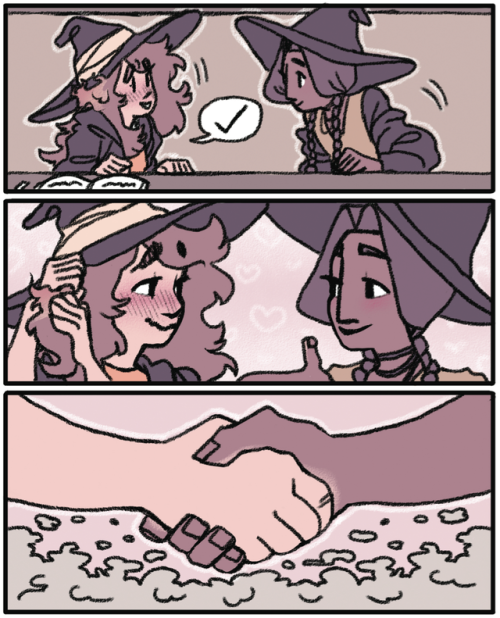
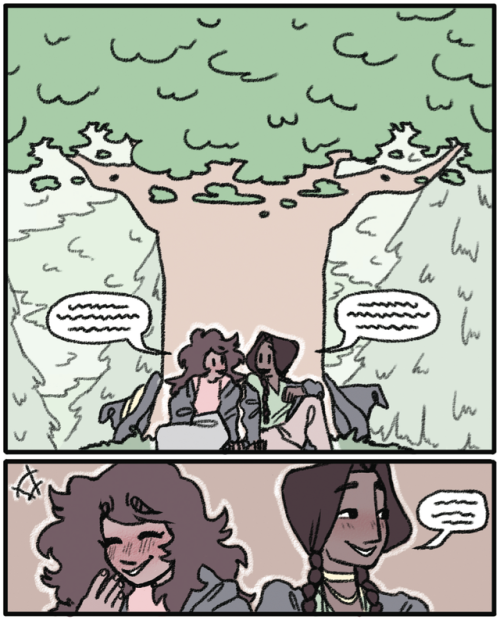
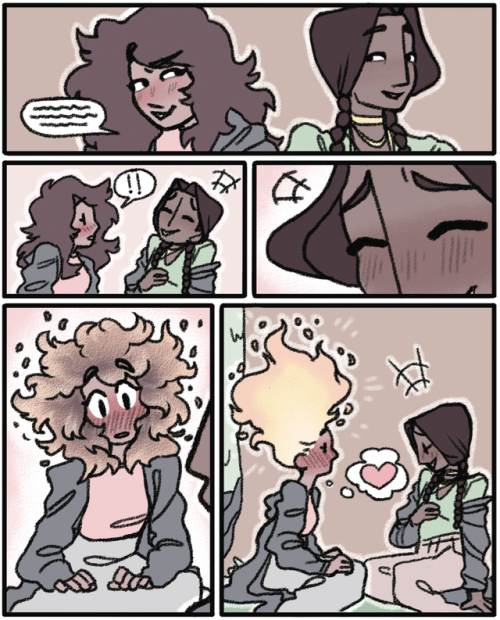
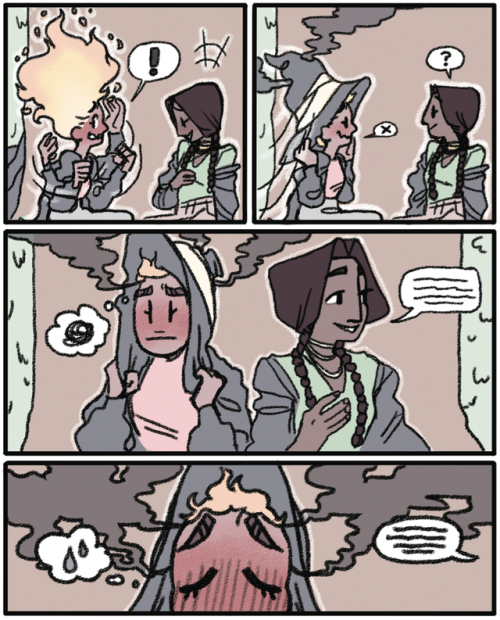
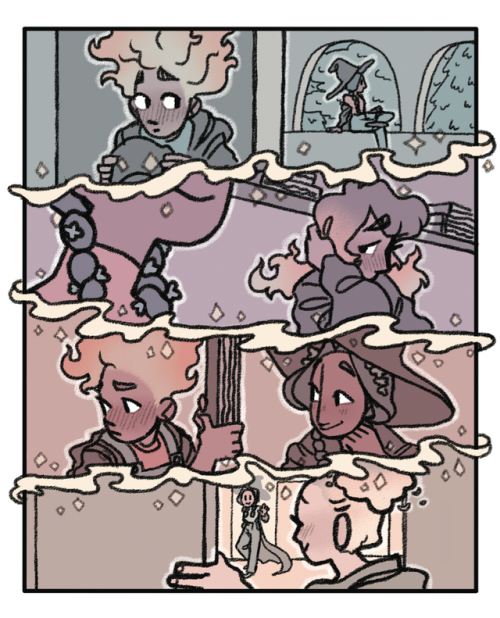







At long last I’m excited to share my comic ‘Tinder’! I had so much fun on this project and it got me really excited to write more stories! I sincerely hope you enjoyed the comic and have a great day! <3
If you want to help support the comic you can help by: ~ !! Reblogging this post !! ( a big please and thank you! <3) ~ Give the comic an ‘ol follow over on Tapas
Or if you have some extra cash you’re welcome to: ~ Buy a digital copy of the comic ~ Buy a physical copy of the comic ~ Support me on Kofi
There is a specific and terrifying difference between “never were” monsters and “are not anymore” monsters
“The thing that was not a deer” implies a creature which mimics a deer but imperfectly and the details which are wrong are what makes it terrifying
“The thing that was not a deer anymore” on the other hand implies a thing that USED to be a deer before it was somehow mutated, possessed, parasitically controlled or reanimated improperly and what makes THAT terrifying is the details that are still right and recognizable poking out of all the wrong and horrible malformations.
Hi! I’ve recently discovered some posts showing that there’s an active fandom for predicting stuff in the Ocotber Daye series/discussing the series. Are their any tumblrs, discords, groups people reccommend?
Also I feel like such a giant pumpkin head reading this series as it comes out aside from the like eight book binge I did when I first got into the series.
-
 adistanttree reblogged this · 2 months ago
adistanttree reblogged this · 2 months ago -
 justsavemeforlater reblogged this · 2 months ago
justsavemeforlater reblogged this · 2 months ago -
 monkeylong123 liked this · 2 months ago
monkeylong123 liked this · 2 months ago -
 clutter-and-nonsense liked this · 2 months ago
clutter-and-nonsense liked this · 2 months ago -
 affinity-itz liked this · 2 months ago
affinity-itz liked this · 2 months ago -
 set-wingedwarrior liked this · 2 months ago
set-wingedwarrior liked this · 2 months ago -
 tategaminu reblogged this · 2 months ago
tategaminu reblogged this · 2 months ago -
 flaming-thing reblogged this · 2 months ago
flaming-thing reblogged this · 2 months ago -
 clavicuss-vile liked this · 2 months ago
clavicuss-vile liked this · 2 months ago -
 incredibly-unprofessional liked this · 2 months ago
incredibly-unprofessional liked this · 2 months ago -
 stupidcourage liked this · 4 months ago
stupidcourage liked this · 4 months ago -
 oooooohalsin reblogged this · 5 months ago
oooooohalsin reblogged this · 5 months ago -
 ehhhhh-fuck liked this · 5 months ago
ehhhhh-fuck liked this · 5 months ago -
 hannibalsolo1 liked this · 5 months ago
hannibalsolo1 liked this · 5 months ago -
 eclcticenthusiast liked this · 5 months ago
eclcticenthusiast liked this · 5 months ago -
 eggtroll liked this · 5 months ago
eggtroll liked this · 5 months ago -
 0reo-speedwagon liked this · 5 months ago
0reo-speedwagon liked this · 5 months ago -
 eponine119 reblogged this · 5 months ago
eponine119 reblogged this · 5 months ago -
 theonlymoosewhoeatsass liked this · 5 months ago
theonlymoosewhoeatsass liked this · 5 months ago -
 darkwing-katy reblogged this · 5 months ago
darkwing-katy reblogged this · 5 months ago -
 andtwokisses reblogged this · 5 months ago
andtwokisses reblogged this · 5 months ago -
 andtwokisses liked this · 5 months ago
andtwokisses liked this · 5 months ago -
 farklelucas reblogged this · 5 months ago
farklelucas reblogged this · 5 months ago -
 mitchgraphicwebdesigner liked this · 5 months ago
mitchgraphicwebdesigner liked this · 5 months ago -
 stormsknife liked this · 5 months ago
stormsknife liked this · 5 months ago -
 morsimmilian-the-funny liked this · 6 months ago
morsimmilian-the-funny liked this · 6 months ago -
 thewingedhourglass liked this · 6 months ago
thewingedhourglass liked this · 6 months ago -
 hyacinth-upon-leith liked this · 7 months ago
hyacinth-upon-leith liked this · 7 months ago -
 syra-syara liked this · 7 months ago
syra-syara liked this · 7 months ago -
 scenegir liked this · 8 months ago
scenegir liked this · 8 months ago -
 chalala-chan liked this · 8 months ago
chalala-chan liked this · 8 months ago -
 kwbr liked this · 8 months ago
kwbr liked this · 8 months ago -
 2much4me-4ever liked this · 9 months ago
2much4me-4ever liked this · 9 months ago -
 spiltsoup liked this · 9 months ago
spiltsoup liked this · 9 months ago -
 str84pedro reblogged this · 9 months ago
str84pedro reblogged this · 9 months ago -
 str84pedro liked this · 9 months ago
str84pedro liked this · 9 months ago -
 dark-scape reblogged this · 9 months ago
dark-scape reblogged this · 9 months ago -
 stickypersontree reblogged this · 10 months ago
stickypersontree reblogged this · 10 months ago -
 just-another-madman liked this · 10 months ago
just-another-madman liked this · 10 months ago -
 lemonandpoppy reblogged this · 10 months ago
lemonandpoppy reblogged this · 10 months ago -
 dontlookatmeimonlybreathing liked this · 10 months ago
dontlookatmeimonlybreathing liked this · 10 months ago -
 philosophyshitscribble reblogged this · 10 months ago
philosophyshitscribble reblogged this · 10 months ago -
 inplodinggofer616 reblogged this · 10 months ago
inplodinggofer616 reblogged this · 10 months ago -
 inplodinggofer616 liked this · 10 months ago
inplodinggofer616 liked this · 10 months ago -
 the-blessed-rodent liked this · 10 months ago
the-blessed-rodent liked this · 10 months ago -
 angelicwings999 liked this · 10 months ago
angelicwings999 liked this · 10 months ago -
 bigdoglittledog reblogged this · 10 months ago
bigdoglittledog reblogged this · 10 months ago -
 bandwidthzero liked this · 10 months ago
bandwidthzero liked this · 10 months ago
22/Bisexual/ Autistic/ ADD/ Dyspraxia/Dysgraphic/ She and her pronouns/ Pagan/intersectional feminist
223 posts
